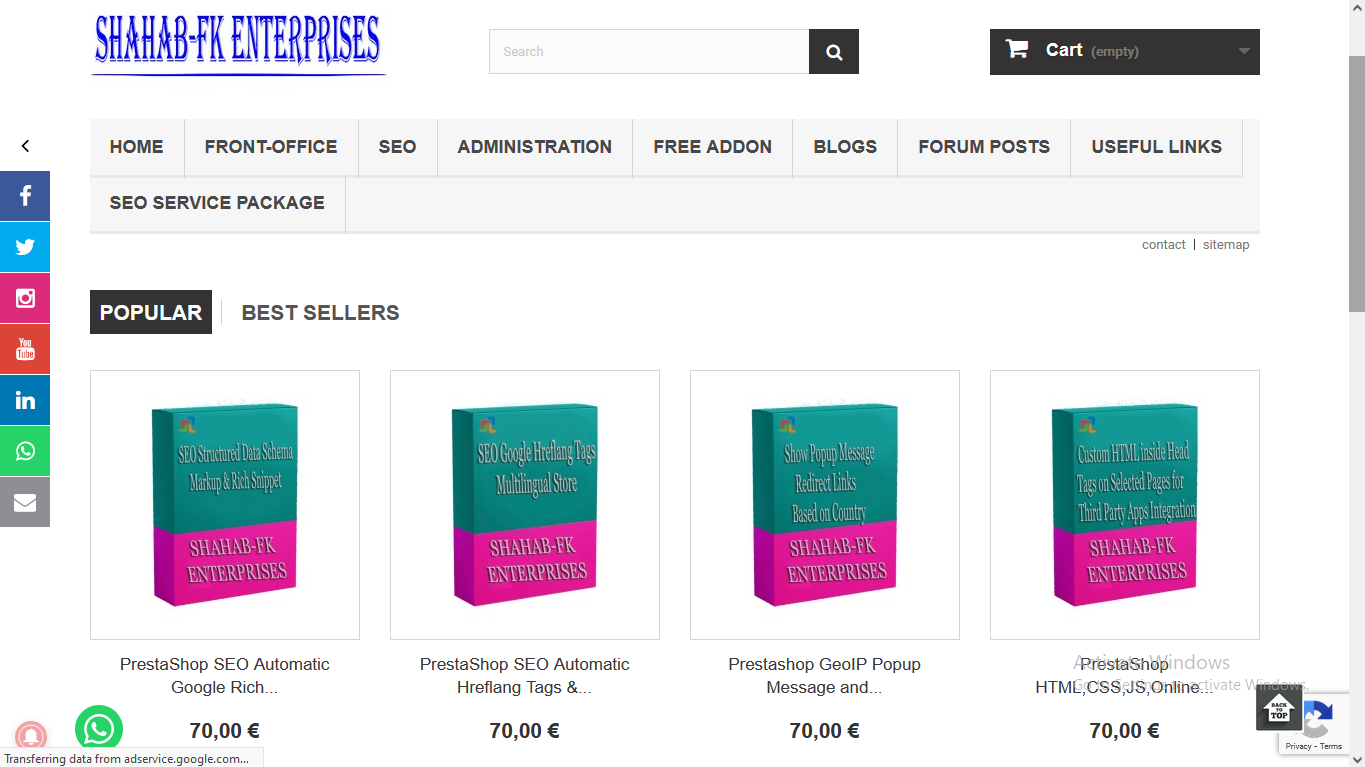PrestaShop is a popular open-source e-commerce platform, but how does it compare to other major platforms like Shopify, WooCommerce, Magento, and BigCommerce? Here’s a breakdown: 1. PrestaShop vs. Shopify Feature PrestaShop Shopify Pricing Free (open-source) but requires hosting, themes, and modules Monthly subscription ($29–$299/month) + transaction fees Ease of Use Moderate – requires technical knowledge Very easy – beginner-friendly, no…
Month: March 2025
PrestaShop seo tips for better visibility
Improving SEO for your PrestaShop store is essential for better visibility on search engines like Google. Here are some effective SEO tips: 1. Optimize Your URLs Enable SEO-friendly URLs: Go to Shop Parameters > Traffic & SEO and enable friendly URLs. Remove ID numbers from URLs to keep them clean: Modify the Dispatcher.php file if needed. Avoid duplicate URLs by…
PrestaShop how to set 301,404,50,0 and other redirects from .htaccess file
You can set up redirects for different HTTP status codes in PrestaShop using the .htaccess file. Here’s how you can do it: 1. Edit the .htaccess file The the .htaccess file is usually located in the root directory of your PrestaShop installation. Open it with a text editor (like Notepad++, VS Code, or any code editor). 2. Add Redirect Rules…
Prestashop Block Order from Country
# Adding Country Block Code in PrestaShop 1.6 For PrestaShop 1.6, the best place to add country restriction code is in an override of the `Cart` or `Address` class. Here’s how to do it properly: ## Method 1: Using a Module (Recommended) 1. Create a simple module with this structure: “` /modules/blockcountry/ blockcountry.php /override/classes/Cart.php “` 2. In `blockcountry.php`: “`php <?php…
Benefits of Email Marketing
Email marketing remains one of the most effective digital marketing strategies. Here are some key benefits: 1. Cost-Effective & High ROI Email marketing is affordable compared to other digital marketing channels. Studies show it delivers one of the highest Return on Investment (ROI) (typically $36 for every $1 spent). 2. Direct & Personalized Communication Allows for personalized messaging using recipient…
PrestaShop 9 features
PrestaShop 9 introduces several significant enhancements aimed at improving performance, security, and user experience for online store owners and developers. Key features include: 1. Symfony Framework Upgrade to Version 6.4 The platform has been updated to Symfony 6.4, the latest long-term support (LTS) version. This upgrade enhances performance, stability, and security, providing developers with access to modern development features. citeturn0search7…
PrestaShop Benefits of schema JSON on website
Implementing JSON-LD schema markup on a PrestaShop website offers several benefits that can enhance both user experience and search engine optimization (SEO). Here are the key advantages: ### 1. **Improved Search Engine Visibility** – **Rich Snippets**: Schema markup helps search engines understand the content of your website better, enabling the display of rich snippets in search results. Rich snippets can…
PrestaShop Benefits of Hreflang and canonical tags on website
Using hreflang and canonical tags in PrestaShop (or any e-commerce website) provides significant SEO and user experience benefits. Here’s why they are important: Hreflang Benefits Hreflang tags help search engines understand the language and regional versions of your pages. This is crucial for multilingual and multinational PrestaShop stores. Avoids Duplicate Content Issues If you have the same product in multiple…
PrestaShop Addons Benefits
PrestaShop Addons provide numerous benefits that enhance the functionality and performance of your e-commerce store. Here are the key advantages: 1. Enhanced Functionality Addons allow you to extend PrestaShop’s core features with additional tools for SEO, marketing, customer service, and more. You can add features like advanced product filters, live chat, and one-click checkout. 2. Improved User Experience Modules help…
PrestaShop How to show page load time in the bottom of the page.
{literal} <p id=”loadTime” style=”font-size: 16px; font-weight: bold; text-align: center;color: blue;”>Calculating…</p> <script> window.onload = function () { let performanceData = window.performance.timing; let loadTimeMs = performanceData.loadEventEnd – performanceData.navigationStart; // Convert to seconds and milliseconds let seconds = Math.floor(loadTimeMs / 1000); let milliseconds = loadTimeMs % 1000; // Format the output in a more readable way let readableTime = seconds > 0 ?…


